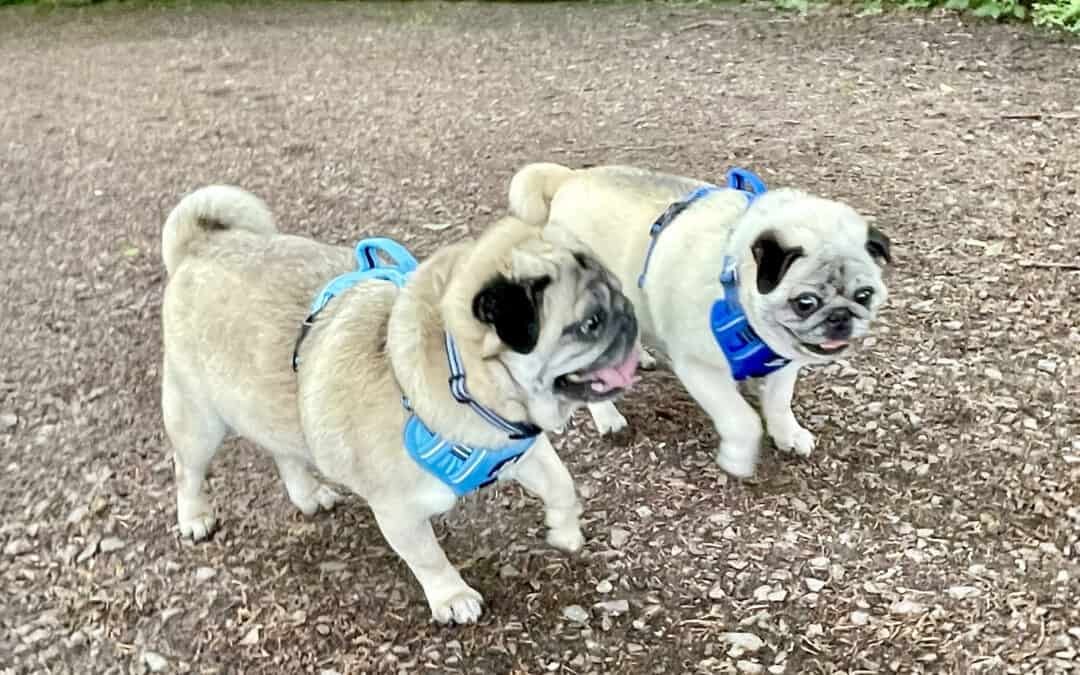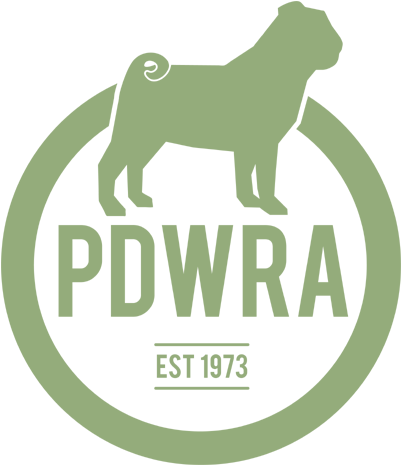Let me introduce Buster and Bentley, two Pugs that we adopted from PDWRA back in March 2023. They came to join me (Alan), Andrew and Mabel, who is our 11-year-old Puggle. For those who might not know, a Puggle is a cross between a Pug and a Beagle. Mabel has epilepsy and is a bundle of excitement and anxiety, although not a rescue dog, she is integral to the Buster and Bentley experience. So, let me introduce Buster, Bentley and Mabel (I know, they sound like a trio of gangsters!)
Andrew and I first came across the PDWRA when looking for a companion for Mabel following the death of her surrogate mother, Molly, in 2017. Mabel did not cope well after Molly’s death, and we didn’t want her to be a lone dog, so we started to look for a dog to rescue (note the careful use of the phrase ‘a dog’ in that sentence). An internet search led us to the PDWRA, and we conducted some research on Pug dogs as a breed. Eventually, we decided to apply and were told there might be a six-month wait. Two or three days after applying, we were sent this photo: –
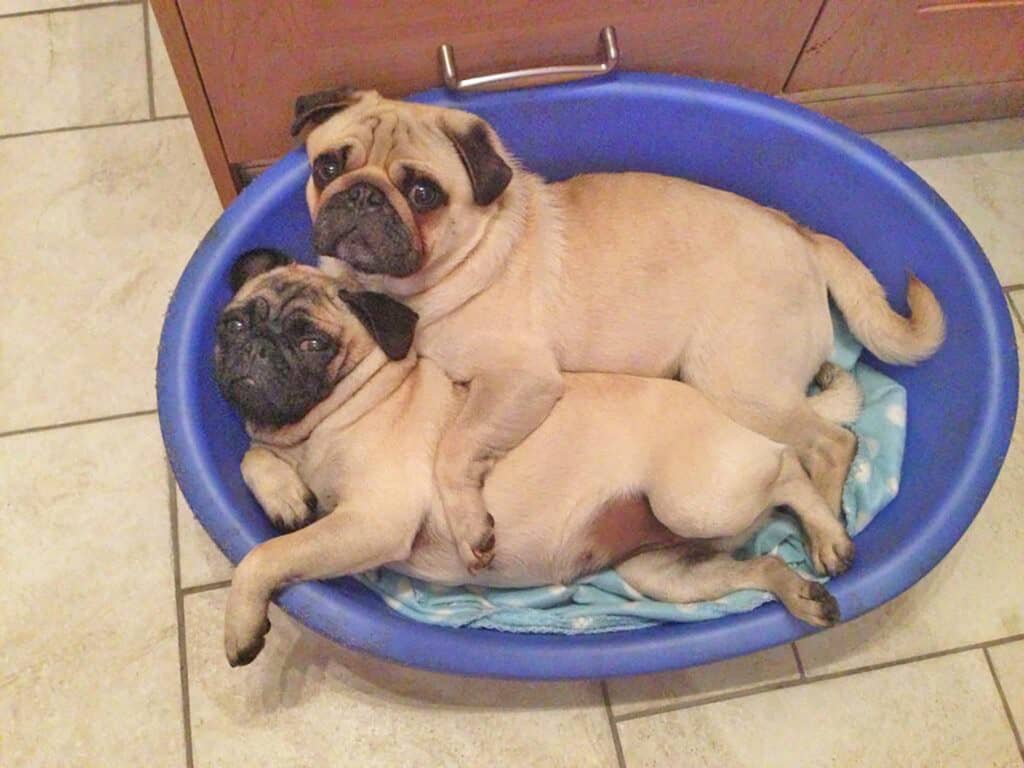
I’ll leave you to guess our reply, but needless to say, the ‘a dog’ became ‘dogs’ and we became a three-dog home. This was Teddy and Winnie. They were our first experience of Pug adoption. Sadly, we only had them for 5 years as they both succumbed to different forms of cancer. Their story is perhaps for another occasion, but for now, on with the Buster, Bentley and Mabel story.
Of course, you can’t ever replace one of your Pugs, but you can give a loving home to another Pug. We decided it was time to provide Mabel with another companion. We applied to PDWRA to adopt again, and as we were at the end of the COVID-19 pandemic, PDWRA had introduced online or virtual home inspections. This process was very straightforward and was more of a discussion to ensure we understood what we were taking on and what sort of help and support might be available. We met with a PDWRA volunteer home assessor, and I gave her a virtual tour of our bungalow and garden using my iPhone camera. All was well, and a short while later, we were asked if we would consider taking in two pugs who had been rescued from an unfortunate situation. They were bonded pugs who had jointly experienced neglect and poor treatment (we are not passing judgment, as we don’t know what led to the situation they were in; not all neglect is purposeful). Buster and Bentley had essentially been kept outside without adequate shelter and were not fed regularly. They were underweight and in poor nutritional condition. Buster had had fits, possibly due to being exposed to strong sunlight and unable to shelter. He was almost blind from a condition called pigmentary keratitis, requiring twice-daily Optimune gel to be instilled. Buster also had signs of arthritis in his forelegs and had muscle wasting in his back legs. Both of them had poor dental health and had to have extensive dental clearance work.
Buster and Bentley were, at this point, being fostered by the wonderful fosterer, Sophie. It just so happened that I was due to be in the area where Sophie lived, so I had the opportunity to go and meet Buster and Bentley before we gave a definite yes to them joining us. Here are a couple of photographs of their foster experience.
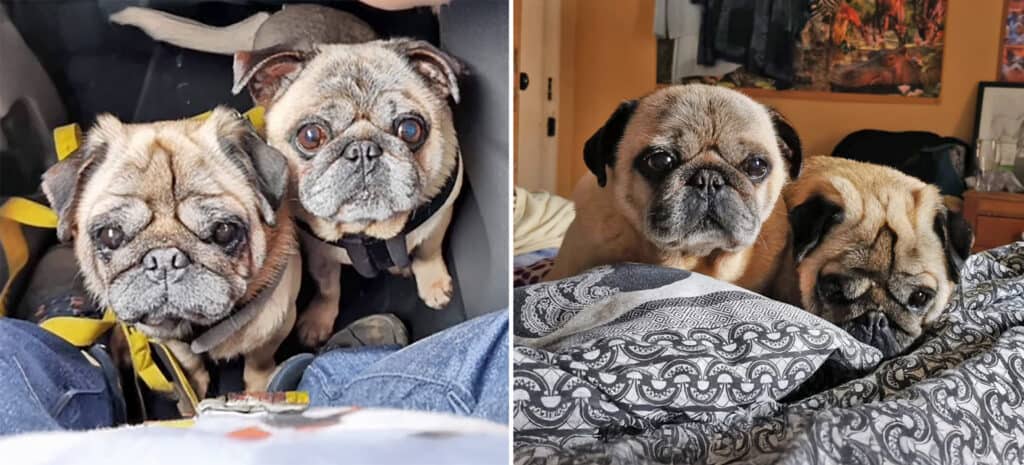
Sophie continued to foster Buster and Bentley for a few more weeks while they completed their various veterinary treatments. At last, the day came to collect them from Sophie. I was sad for Sophie, as it can’t be easy to let your foster Pugs go, but pleased for us as we started a new phase of life back home, back to being a three-dog home again.
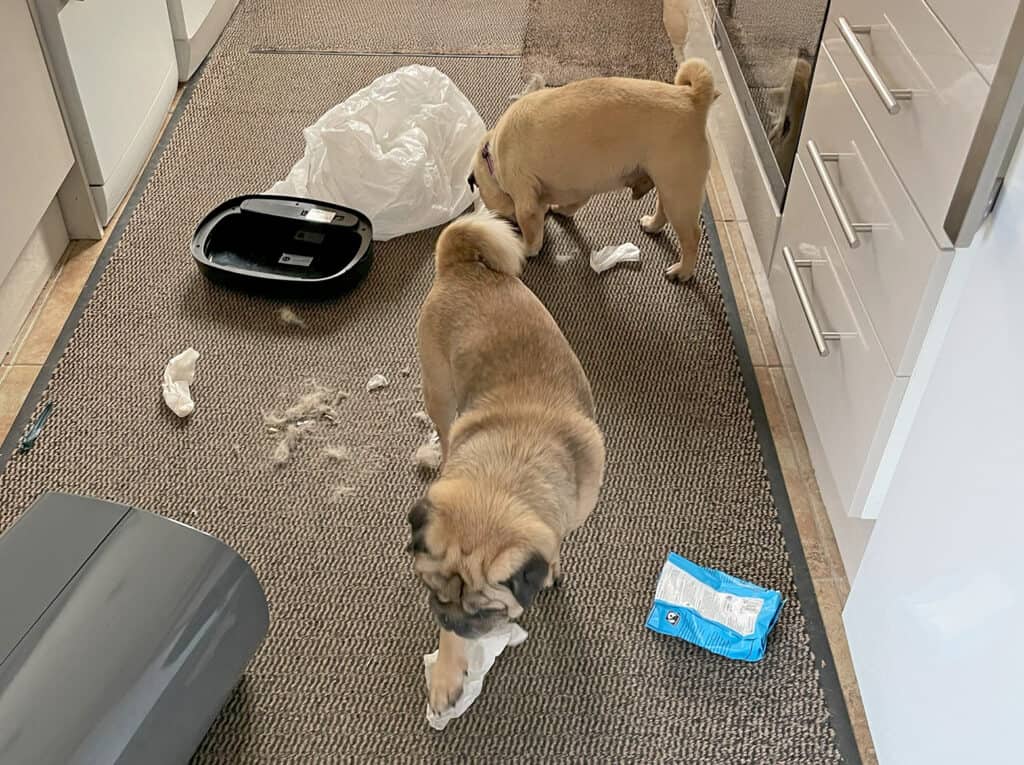
On arrival home, Mabel, Buster and Bentley all introduced each other in the usual dog fashion, extensive sniffing of areas most of us would rather not sniff! They got on well right from the word go. Buster is remarkably confident. He soon discovered the kitchen bin and realised he could easily tip it over and explore its contents. Bentley is more polite and reserved. Since he has been with us, we have come to the conclusion that Bentley is either going or is deaf.
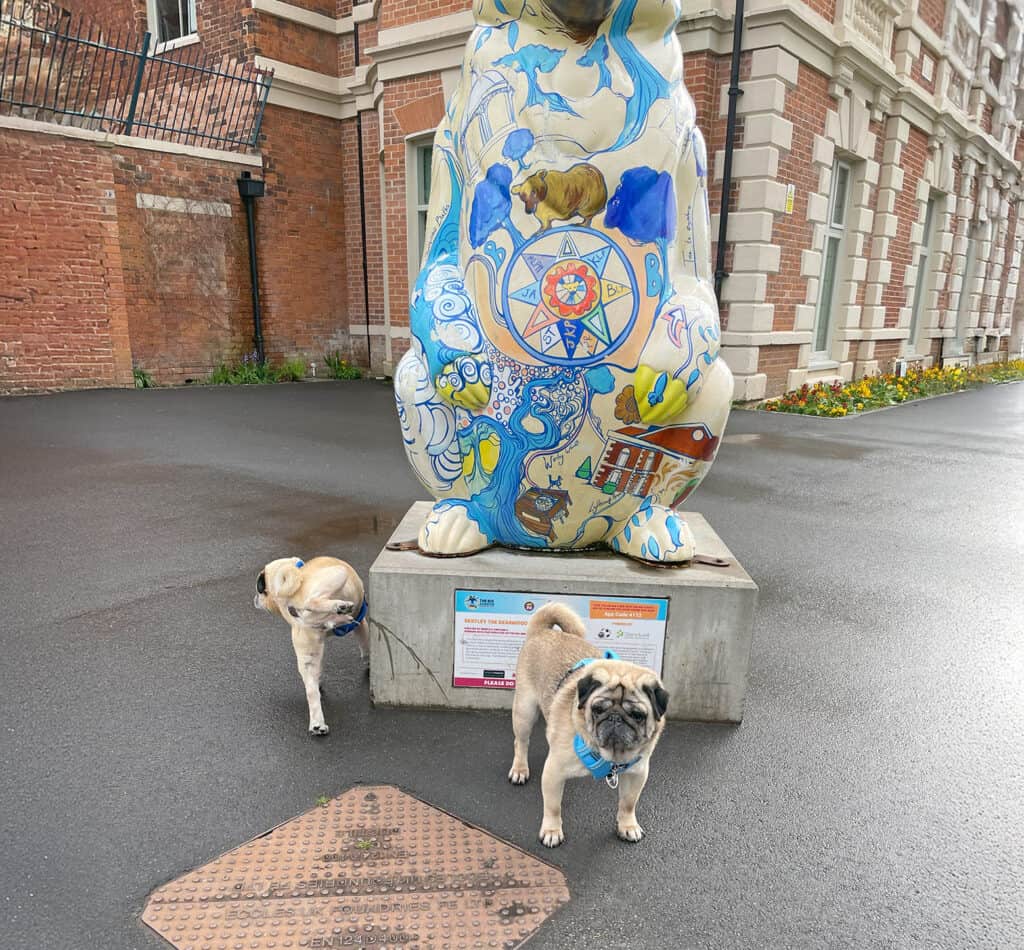
Walking was a favourite pastime as it often led to lots of adoration from passersby. Recently, Buster’s arthritis, combined with a neurological deficit in his lower spine, has left him struggling to get back from walks, but he still tries and still enjoys the smells in the park. The photograph below is in our local park. The statue of the bear is called Bentley Bear. Bentley Pug is expressing his artistic opinion of the statue.
One of the favourite occupations of all three is sleeping, and they often sleep together.
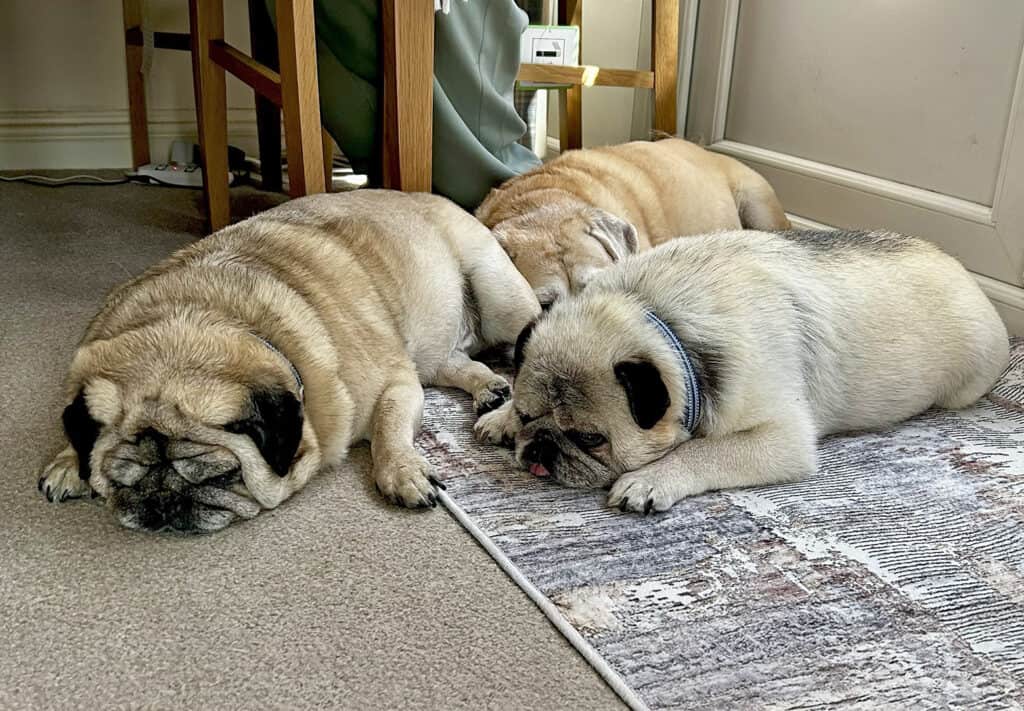
So, what have we learned from adopting Pugs? Well, firstly, if you want a source of unquestioning love and companionship, you couldn’t choose a more apt breed of dog. They are with you always, and I mean that in every sense. You cannot shake off a pug even if you wish to (but why would you?). They are around your feet wherever you are. You can’t move without them springing up, even from the deepest sleep, to follow you. If you go to the bathroom, they come with you. If you are lucky, they will sit outside and wait for you rather than going in with you, but if they stay outside, you will have to endure snorting noises under the bathroom door. It can be disconcerting at first, but you grow to love it. When there is no Pug in the house, it is too quiet. There is a reason the collective noun for a group of Pugs, grumble, exists. It describes the background noise that you will have in your house at all times – though I think it’s more of a rumble than a grumble.
There is a cost to all this love and companionship, and that cost is both emotional and financial. Buster and Bentley came with a range of illnesses that are long-term and need continuing care. Many of these conditions are common in pugs, especially as they age. Vet bills can be expensive. Bentley has an underactive thyroid and has to have daily medication. Buster, as mentioned earlier, has arthritis and eyesight problems that require daily medication. This, in addition to all the usual flea and worming treatments, as well as vaccinations. Our advice is to obtain insurance if possible, or else develop a strong savings habit to cover veterinary bills. As soon as surgery is called for, you are often likely to be into the thousands of pounds territory. Thanks to the wonderful PDWRA, the cost of Buster’s eye ointment, at about £40 a tube, is covered by them as it was an existing condition and wouldn’t be covered by insurance.
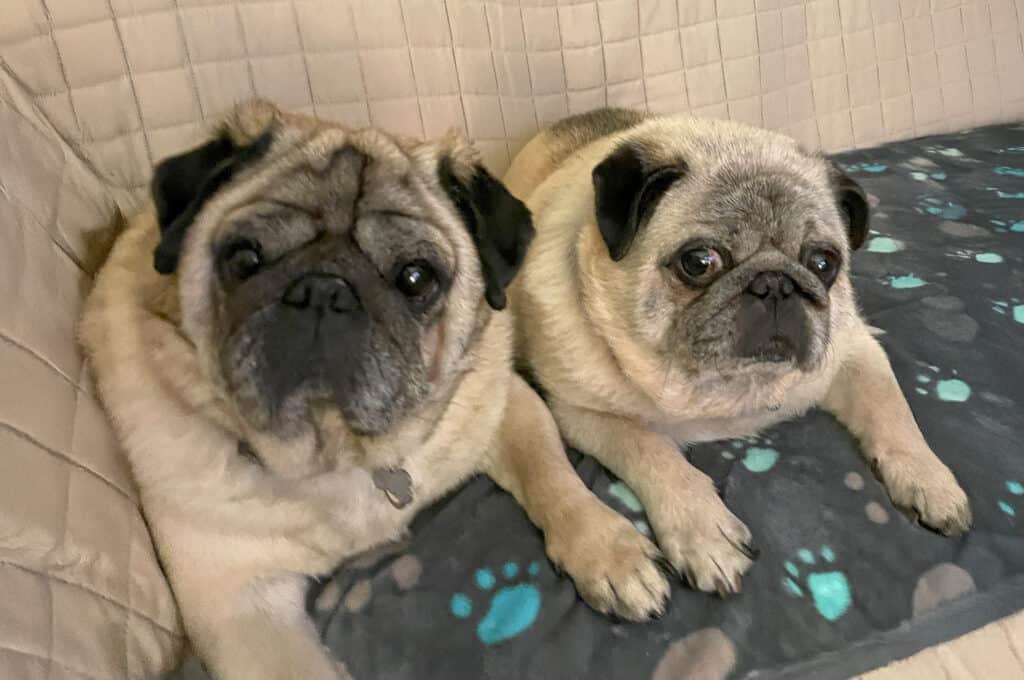
To end on a more positive note, despite the healthcare issues and the constant trips to the vet, the rewards of caring for a pug far outweigh the costs. We wouldn’t be without pugs in our lives and are eternally grateful to the PDWRA for allowing us to experience their devotion, companionship and entertaining characteristics. What’s more, please consider adopting older Pugs. They have so much love to give. It can be tempting to go for the sweet little youngsters, but we have found the oldies to be goodies and can’t recommend them enough.

